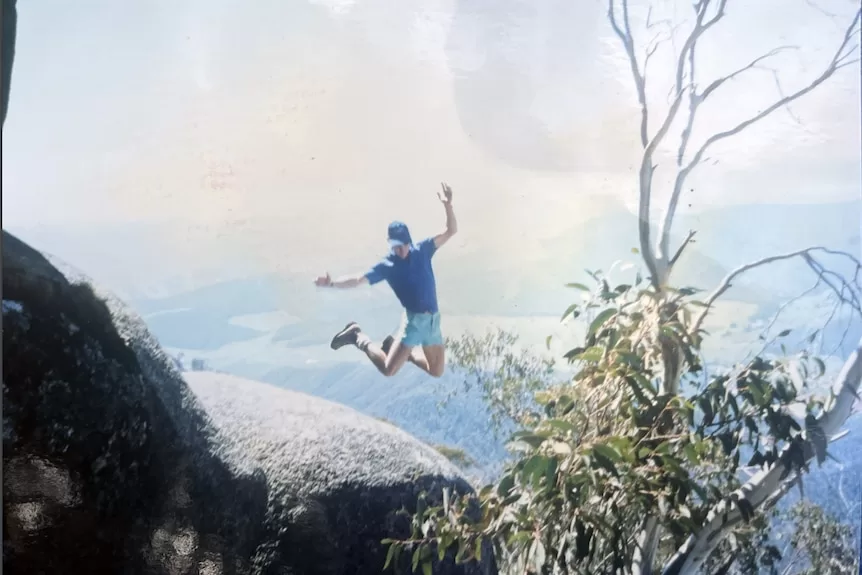At 16, Jack Retallack started as a junior porter at the “grand old dame” of Victoria’s high country, the Mount Buffalo Chalet.
That was in 1985, but he doesn’t venture up there these days. He can’t bear to see the building shut up.
Built in 1910 by the Victorian government, the chalet was a popular holiday destination throughout the 20th century before shutting to the public in 2007.
“The old girl, she’s tired but we need people to start giving it a little bit more love,” Mr Retallack said.
He says passion remains for the “institution”.
“If I put it on Facebook and said we’re taking guests, I’d fill the place,” he said.
Mr Retallack is one of a handful of long-term advocates for the building who are hopeful Parks Victoria will soon announce a café will reopen there – after two failed EOI processes.
The Executive Director of Visitor Experience, Lisa Patroni, said in a statement that Parks Victoria was “continuing to work on a range of improvements, including a potential café offering” at Mount Buffalo.
She said more than $6 million had been invested to conserve and protect the chalet’s heritage foundations by the state and federal government since 2015.
“We will continue to look for ways to enhance the chalet that protect its heritage and make it more accessible for everyone to visit,” Ms Patroni said.
‘An emotional place’
Mr Retallack went on to become a guide, leading hikes in the summer and teaching skiing in the winter.
“It becomes part of your life. Once you’ve been there and you’ve experienced it, you’ll never forget it,” he said.
“It’s such an emotional place.”
He said — despite being the guide — it was guests who introduced him to some of the secret spots the trails had to offer.
Mr Retallack grew into an adult at the chalet, a “unique” building rich with “idiosyncrasies”.
He said there was a wing of the chalet known as Siberia.
It’s so far toward the back of the building “it feels like you are going nowhere”.
Ghost stories also persisted, with unexplained bumps heard in the night.
“This [the chalet] is an old person, they’re going to have some creaks and groans,” he said.
But, it could get spooky.
“You’d be walking around, and you’d see things in the distance, and you’d think ‘Who’s that?’ Turn around. There’s no one,” Mr Retallack said.
He described living on site as a staff member as like a share house “on steroids”. “Staff parties were renowned,” he said.
An evolving institution
Mr Retallack said he’d watched the chalet “adapt to life”.
“When I first started we were still doing silver service,” he said, and it went from mandatory suits, ties and dresses for guests to “a bit of a free-for-all”.
Mr Retallack said the building needed to change.
“If you don’t move forward, you’re going to stay stale and the place will collapse.”
Mr Retallack was critical of red tape he believed made it difficult for the chalet to operate before its closure.
He says he is hopeful that a future business will be given greater flexibility.
“Rules that were in place choked everything to a point that made it near impossible to survive,” he said.
‘A good culture’
David Chitty, the owner and operator of Adventure Guides Australia and the Mount Buffalo ski school, also has a long history with the building.
His business was based out of the chalet from the late1980s until 2007.
Caving was his most popular offering.
He said there were families that had been coming for decades. “There was an element of formality,” Mr Chitty said.
He said that when you arrived you would be met at reception by the manager or sub-manager.
And he said the chalet had maintained standards more common in the 1940s and 1950s.
“There was probably somewhere between 50 and 60 staff in the chalet, depending on the time of year,” he said.
But, he said it couldn’t operate with fewer than 35 or 40.
“There was a good culture there, so staff stayed on for a long while,” Mr Chitty said.
“Customers expected the same staff to be there when they came back year after year.”
Staff provided “a level of service that you probably don’t find outside an elite hotel these days.”
‘Won’t take that much’
He said, as an accommodation business, the building faced challenges.
“The issue with the chalet was it was hard to get enough customers on a regular basis to maintain your profit margin,” Mr Chitty said.
“You could fill it three times over at Easter or Christmas holidays.
“But for instance, February — when everyone goes back to work and school — there would be very few people.”
He says it’s a public building and there needs to be public access, “even if it’s only on weekends and holidays or something like that”.
Mr Chitty said works had been taking place to preserve the chalet.
“Once some sort of an option comes up for a lease or some other type of partnership with a business, it won’t take that much to get the chalet up and running,” he said.
